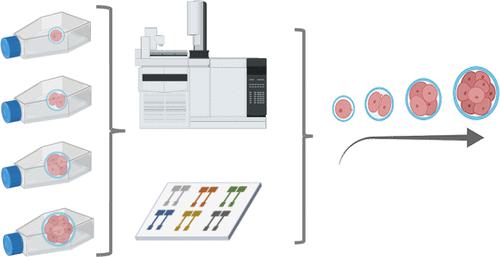Our official English website, www.x-mol.net, welcomes your feedback! (Note: you will need to create a separate account there.)
Non-Invasive Staging of In Vitro Mice Embryos by Means of Volatolomics
ACS Sensors ( IF 8.9 ) Pub Date : 2022-06-16 , DOI: 10.1021/acssensors.2c00792 Yasmin Shibli Abu Raya 1 , Yael Hershkovitz-Pollak 1 , Radu Ionescu 2 , Hossam Haick 1
ACS Sensors ( IF 8.9 ) Pub Date : 2022-06-16 , DOI: 10.1021/acssensors.2c00792 Yasmin Shibli Abu Raya 1 , Yael Hershkovitz-Pollak 1 , Radu Ionescu 2 , Hossam Haick 1
Affiliation

|
Current methods for embryo selection are limited. This study assessed a novel method for the prediction of embryo developmental potential based on the analysis of volatile organic compounds (VOCs) emitted by embryo samples. The study included mice embryos monitored during the pre-implantation period. Four developmental stages of the embryos were tested, covering the period from 1 to 4 days after fecundation. In each stage, the VOCs released by the embryos were collected and examined by employing two different volatolomic techniques, gas-chromatography coupled to mass-spectrometry (GC–MS) and a nanoarray of chemical gas sensors. The GC–MS study revealed that the VOC patterns emanating from embryo samples had statistically different values at different stages of embryo development. The sensor nanoarray was capable of classifying the developmental stages of the embryos. The proposed volatolomics analysis approach for embryos presents a promising potential for predicting their developmental stage. In combination with conventional morphokinetic parameters, it could be effective as a predictive model for detecting metabolic shifts that affect embryo quality before preimplantation.
中文翻译:

通过 Volatolomics 对体外小鼠胚胎进行非侵入性分期
目前用于胚胎选择的方法是有限的。本研究评估了一种基于胚胎样品释放的挥发性有机化合物 (VOC) 分析预测胚胎发育潜力的新方法。该研究包括在植入前监测的小鼠胚胎。测试了胚胎的四个发育阶段,涵盖受精后1至4天的时期。在每个阶段,通过使用两种不同的挥发组学技术、气相色谱耦合质谱 (GC-MS) 和化学气体传感器纳米阵列,收集和检查胚胎释放的 VOC。GC-MS 研究表明,从胚胎样本中散发出来的 VOC 模式在胚胎发育的不同阶段具有统计学上不同的值。传感器纳米阵列能够对胚胎的发育阶段进行分类。所提出的胚胎挥发组学分析方法为预测其发育阶段提供了有希望的潜力。结合传统的形态动力学参数,它可以有效地作为预测模型来检测影响植入前胚胎质量的代谢变化。
更新日期:2022-06-16
中文翻译:

通过 Volatolomics 对体外小鼠胚胎进行非侵入性分期
目前用于胚胎选择的方法是有限的。本研究评估了一种基于胚胎样品释放的挥发性有机化合物 (VOC) 分析预测胚胎发育潜力的新方法。该研究包括在植入前监测的小鼠胚胎。测试了胚胎的四个发育阶段,涵盖受精后1至4天的时期。在每个阶段,通过使用两种不同的挥发组学技术、气相色谱耦合质谱 (GC-MS) 和化学气体传感器纳米阵列,收集和检查胚胎释放的 VOC。GC-MS 研究表明,从胚胎样本中散发出来的 VOC 模式在胚胎发育的不同阶段具有统计学上不同的值。传感器纳米阵列能够对胚胎的发育阶段进行分类。所提出的胚胎挥发组学分析方法为预测其发育阶段提供了有希望的潜力。结合传统的形态动力学参数,它可以有效地作为预测模型来检测影响植入前胚胎质量的代谢变化。

























 京公网安备 11010802027423号
京公网安备 11010802027423号